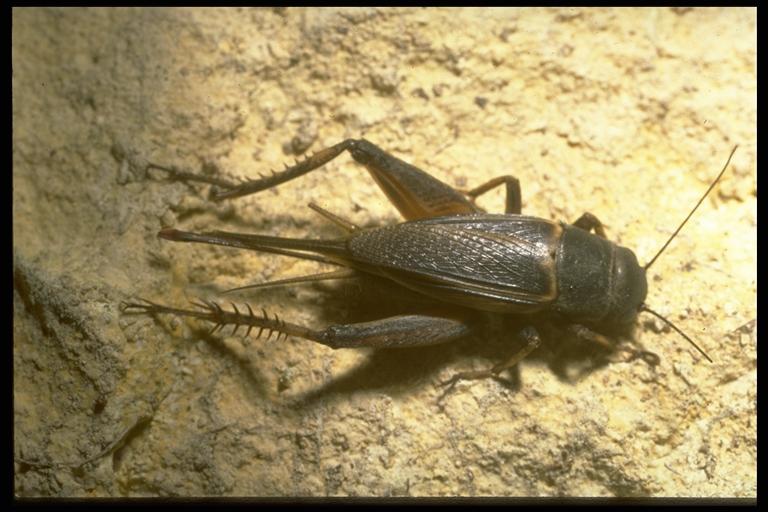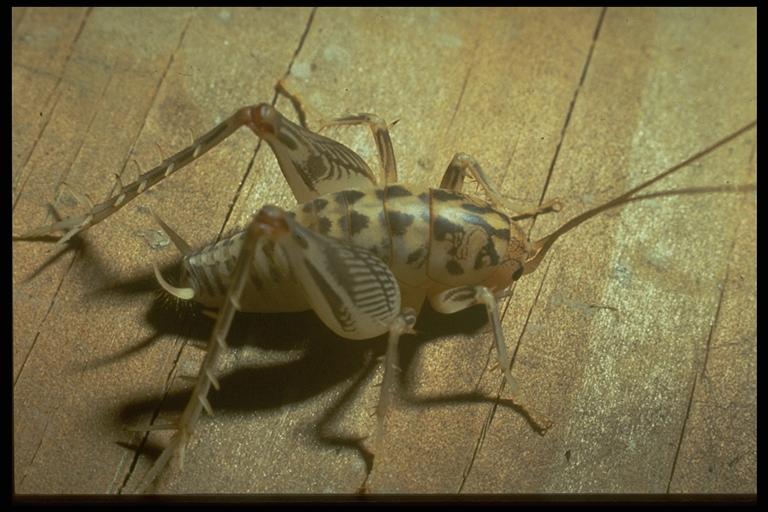
A field cricket, Gryllus sp. (Orthoptera: Gryllidae). Photo by Drees.
Common Name: Cricket
Scientific Name: Gryllus sp.
Order: Orthoptera
Description: Field crickets are dark brown to black crickets, 9/16 to over 1 inch long. House crickets, Acheta domesticus (Linnaeus), are similar to field crickets but are smaller (about 3/4 inch long) and yellowish-brown with three dark bands on the head and prothorax. They can breed indoors. Cave and camel crickets (Gryllacrididae) are dark brown, wingless and have long antennae, long well-developed hind legs for jumping. The head is bent down and the back is arched up, giving these insects a humped-backed (camel) appearance.
Life Cycle: Simple metamorphosis. Adult females are recognizable because of the sword-like egg laying structure (ovipositor) in addition to the two appendages (cerci) at the end of the abdomen, and their fully developed wings. Females deposit eggs in moist soil or sand. After 15 to 25 days, nymphs hatch from the eggs. They resemble adults except for their smaller size and lack of wings. Nymphs develop to adults in about 12 weeks, depending on temperature. As many as three generations may be produced per year in southern areas. Winter is spent in the egg stage in cold climates and also as nymphs in warmer areas. Under cool conditions, crickets can be kept alive for an extended period of time. Adult males chirp to mark territory and attract females.

A cave cricket or camel cricket, Ceuthophilus sp. (Orthoptera: Gryllacrididae). Photo by Jackman.
Habitat, Food Source(s), Damage: These crickets live in cool dark and damp habitats like caves, plumbing, under rocks, damp basements and inside privies. Chicken laying mash or dry dog food is excellent feed for raising crickets. Crickets spend the day in warm, dark cracks and crevices and emerge at night to feed.Outdoors, highnumbers of crickets can damage garden plants. Indoors, crickets can damage natural and synthetic fabrics, furs and carpeting.
Pest Status: Feed on plant material, but are less of a plant pest problem than a nuisance when found in large numbers; prefer outdoors, but will be attracted to lights in large numbers and invade homes. Crickets are one of the more effective baits for sunfish, bluegill and catfish.
For additional information, contact your local Texas A&M AgriLife Extension Service agent or search for other state Extension offices.
Literature: Davis 1981; Helfer 1972; Leser 1980.